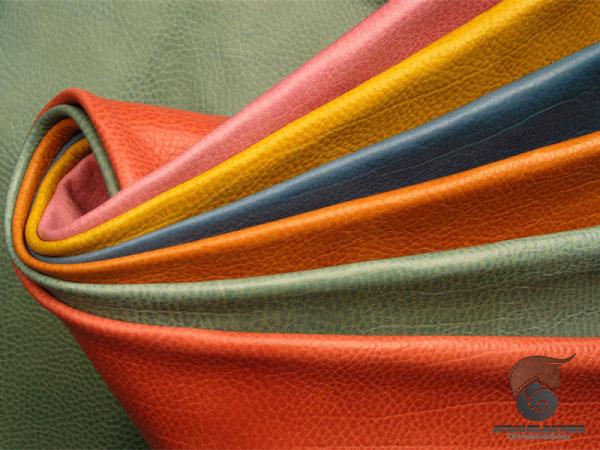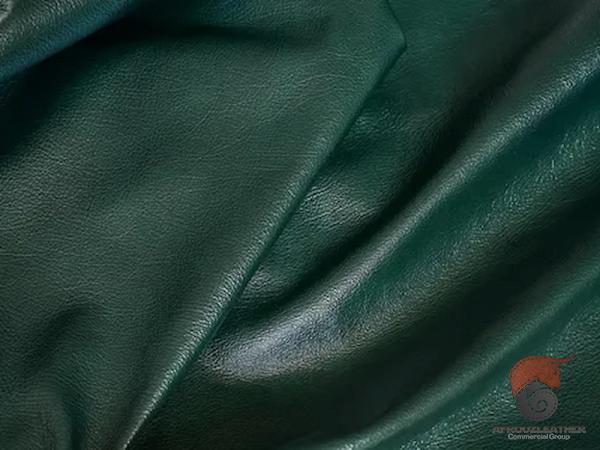Raw leather hides are highly sought-after materials used in various industries, including fashion, upholstery, automotive, and home goods. These hides go through a meticulous process of sourcing, tanning, and treatment to produce high-quality leather products. In this summary, we will explore the characteristics, types, sourcing methods, and market trends of raw leather hides for sale. 1. Characteristics and Quality Factors: Raw leather hides come in different size, thickness, texture, and quality grades. The size of a hide can vary depending on the animal it is sourced from, such as cow, sheep, goat, buffalo, or exotic animals like alligator or ostrich. Thickness is another vital characteristic, which affects the durability and intended use of the leather. The texture, such as smooth or grainy, can also vary based on the intended application. Quality factors to consider when evaluating raw leather hides include the presence of scars, stretch marks, and insect bites. Additionally, the overall condition of the hide, including its cleanliness and moisture content, is crucial in determining its suitability for further processing.
leather
 2. Types of Raw Leather Hides: a. Cowhide: Cowhide is the most commonly used raw leather hide due to its availability and durability. It has a wide range of applications, including footwear, belts, furniture upholstery, and even car interiors. b. Sheepskin: Sheepskin is highly valued for its softness and fine grain texture. It finds applications in clothing, accessories, and furniture coverings. c. Goatskin: Goatskin leather is known for its strength and suppleness, making it ideal for high-wear items like gloves and boots. It is also commonly used in the production of high-end handbags and accessories. d. Exotic Hides: Exotic raw leather hides, such as alligator, crocodile, ostrich, and python, add a touch of luxury to products like handbags, wallets, and shoes. These exotic hides are prized for their unique patterns and textures. 3. Sourcing Methods: Raw leather hides are sourced through various methods, predominantly from farms, slaughterhouses, or suppliers specializing in the trade of animal byproducts. Well-established suppliers often adhere to ethical practices, ensuring the legal and humane sourcing of raw materials. Farms dedicated to rearing livestock for leather production ensure a controlled breeding environment, allowing for consistent quality and traceability of the raw hides. Slaughterhouses play a role in harvesting hides as a by-product of the meat industry.
2. Types of Raw Leather Hides: a. Cowhide: Cowhide is the most commonly used raw leather hide due to its availability and durability. It has a wide range of applications, including footwear, belts, furniture upholstery, and even car interiors. b. Sheepskin: Sheepskin is highly valued for its softness and fine grain texture. It finds applications in clothing, accessories, and furniture coverings. c. Goatskin: Goatskin leather is known for its strength and suppleness, making it ideal for high-wear items like gloves and boots. It is also commonly used in the production of high-end handbags and accessories. d. Exotic Hides: Exotic raw leather hides, such as alligator, crocodile, ostrich, and python, add a touch of luxury to products like handbags, wallets, and shoes. These exotic hides are prized for their unique patterns and textures. 3. Sourcing Methods: Raw leather hides are sourced through various methods, predominantly from farms, slaughterhouses, or suppliers specializing in the trade of animal byproducts. Well-established suppliers often adhere to ethical practices, ensuring the legal and humane sourcing of raw materials. Farms dedicated to rearing livestock for leather production ensure a controlled breeding environment, allowing for consistent quality and traceability of the raw hides. Slaughterhouses play a role in harvesting hides as a by-product of the meat industry.
Specifications of leather
 They ensure proper skinning and initial preservation to prevent spoilage before further processing can occur. 4. Market Trends and Demand: The market for raw leather hides continues to grow due to increasing demand from industries like fashion and automotive. The robust demand for luxury goods and high-end leather products drives the market for top-quality hides, including those from exotic animals. Moreover, eco-conscious consumers are showing growing interest in sustainably sourced raw leather hides, promoting a rise in the popularity of ethically produced options. The fashion industry remains one of the largest consumers of raw leather hides, including luxury brands that prioritize craftsmanship and quality. The automotive and upholstery sectors also contribute significantly to the demand, seeking durable and aesthetically pleasing leather materials. 5. Pricing and Factors Influencing Costs: The pricing of raw leather hides varies based on several factors, including animal type, origin, quality, scarcity, and market demand. Exotic hides tend to have higher price tags due to their limited availability, rarity, and unique patterns. Factors such as government regulations, transportation costs, and labor expenses can also drive up prices. 6. Tanning and Processing: Raw leather hides undergo a tanning process to transform them into usable leather materials. Tanning involves treating the hides with chemicals to stabilize and preserve the material.
They ensure proper skinning and initial preservation to prevent spoilage before further processing can occur. 4. Market Trends and Demand: The market for raw leather hides continues to grow due to increasing demand from industries like fashion and automotive. The robust demand for luxury goods and high-end leather products drives the market for top-quality hides, including those from exotic animals. Moreover, eco-conscious consumers are showing growing interest in sustainably sourced raw leather hides, promoting a rise in the popularity of ethically produced options. The fashion industry remains one of the largest consumers of raw leather hides, including luxury brands that prioritize craftsmanship and quality. The automotive and upholstery sectors also contribute significantly to the demand, seeking durable and aesthetically pleasing leather materials. 5. Pricing and Factors Influencing Costs: The pricing of raw leather hides varies based on several factors, including animal type, origin, quality, scarcity, and market demand. Exotic hides tend to have higher price tags due to their limited availability, rarity, and unique patterns. Factors such as government regulations, transportation costs, and labor expenses can also drive up prices. 6. Tanning and Processing: Raw leather hides undergo a tanning process to transform them into usable leather materials. Tanning involves treating the hides with chemicals to stabilize and preserve the material.
buy leather
 Common tanning methods include vegetable tanning, chrome tanning, and synthetic tanning. Each method yields different properties and characteristics, influencing the end-use of the leather. Following tanning, the hides are further processed to produce different finishes such as full-grain, top-grain, corrected-grain, and split leather. These finishes have varying levels of quality and characteristics, determining their suitability for different applications. Conclusion: Raw leather hides are essential materials used in a variety of industries. Understanding the various characteristics, types, sourcing methods, and market trends within the raw leather hides industry is essential for businesses and individuals involved in the manufacturing and buying of leather products. By considering the quality factors and staying informed about market trends, industry players can make informed decisions to meet the demands of an ever-evolving market.
Common tanning methods include vegetable tanning, chrome tanning, and synthetic tanning. Each method yields different properties and characteristics, influencing the end-use of the leather. Following tanning, the hides are further processed to produce different finishes such as full-grain, top-grain, corrected-grain, and split leather. These finishes have varying levels of quality and characteristics, determining their suitability for different applications. Conclusion: Raw leather hides are essential materials used in a variety of industries. Understanding the various characteristics, types, sourcing methods, and market trends within the raw leather hides industry is essential for businesses and individuals involved in the manufacturing and buying of leather products. By considering the quality factors and staying informed about market trends, industry players can make informed decisions to meet the demands of an ever-evolving market.

Your comment submitted.